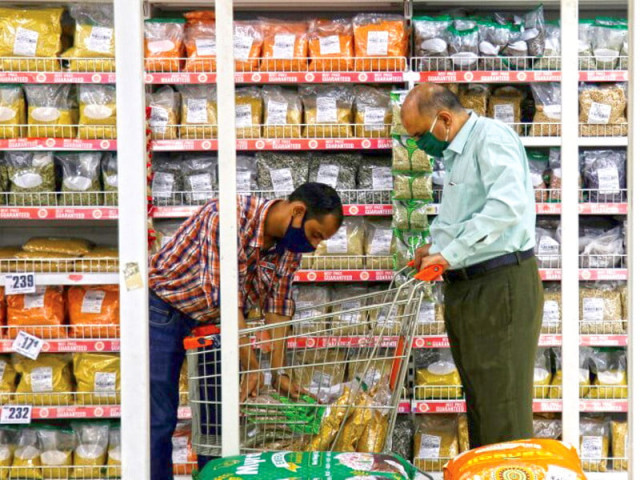Inflation spikes to 26.6% in Oct
Prices of all essential goods rise; inflation more than double wage increase

Consumer inflation in Pakistan spiked to 26.6% in October and the pace of price hike further accelerated to nearly 30% in rural areas where a majority of the population lives as prices of all essential commodities were on the rise. Inflation reading was more than double the increase of around 13% in wages, making it difficult for most of the people to make ends meet. The Consumer Price Index (CPI), the inflation monitor, rose by 26.6% in October compared to the same period of last year, the Pakistan Bureau of Statistics (PBS) reported on Tuesday.
Data showed that the overall inflation rate was far higher than the government and independent expectations, which ranged from 22% to 25.5%. Despite being very high, the inflation rate did not truly depict the miseries of people due to high costs of food and transportation. Prices of the perishable food items group surged by 70.5% in October, indicating how much difficult it had become for even a middle-class family to run a kitchen without compromising on other expenditures.
The transport group saw a price hike of 53.5%, according to the PBS. Data further showed that the month-on-month inflation jumped by 4.7% in October, which was one of the highest in recent times. It came mainly because of increase in electricity and food prices. Core inflation, which is calculated after excluding the volatile energy and food prices, increased in October by 14.9% in urban areas and 18.2% in rural areas. The core inflation is now higher than the State Bank’s policy rate of 15%.
For July-October of current fiscal year, average inflation came in at 25.5%, which was more than double the official target of 11.5% for the current fiscal year, set before the floods. PBS reported that the CPIbased inflation surged by 24.6% in urban areas and 29.5% in villages and towns. A majority of Pakistan’s population lives in rural areas whose income level is less than the earnings of people residing in cities. The continuous surge in inflation indicates the failure of ruling alliance, which has not been able to check price hike. It has rather contributed to the inflation by increasing taxes, even more than that asked for by the International Monetary Fund (IMF).
There was some hope that the government would reduce the price of petrol by passing on the reduction in crude oil rates. Instead, it left the price unchanged on Monday and increased the petroleum levy to Rs50 per litre, a threshold it was required to achieve in January 2023. PBS stated that the petrol price was 65% higher in October than in the same month of last year. Stationary prices rose by 45% compared to a year ago. Cars became expensive by 34%. Non-food inflation increased by 18.2% in cities and 22.4% in rural areas. The pace of increase in food inflation was sharper than the non-food inflation.
Food inflation surged by 34.7% in cities and 37.2% in villages and towns last month, showed the PBS data. Prices of both perishable and non-perishable food products went up significantly. Food group prices surged by 36.2% in October compared to the same month a year ago. But prices of perishable food items soared by 70.5%, indicating the breakdown of food supply chain and effective checks by provincial governments. Prices of tomatoes increased by 220% compared to a year ago, followed by 166% increase in rates of onions and 70% rise in rates of gram whole.
Vegetable ghee and cooking oil prices soared up to 59%, rice 41%, wheat flour 37% and fresh milk 30%, according to the PBS. In addition to these, prices of the alcoholic beverages and tobacco group soared by 30% while those of the clothing and footwear group surged by 18%. Prices of the housing, water, electricity and gas fuels group were higher by nearly 12%


















COMMENTS
Comments are moderated and generally will be posted if they are on-topic and not abusive.
For more information, please see our Comments FAQ